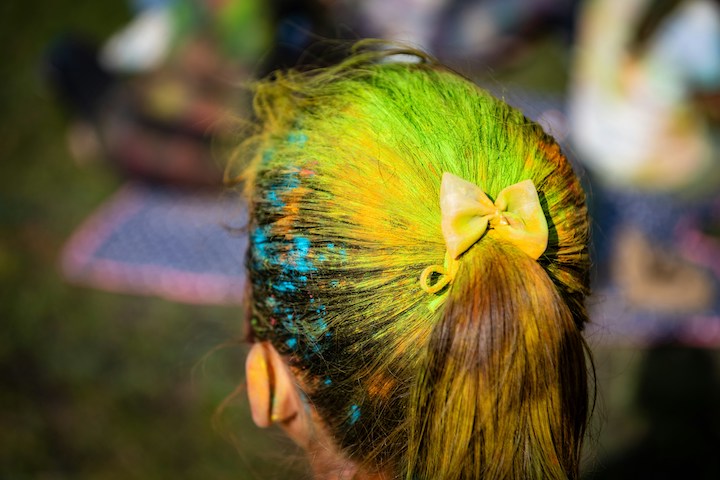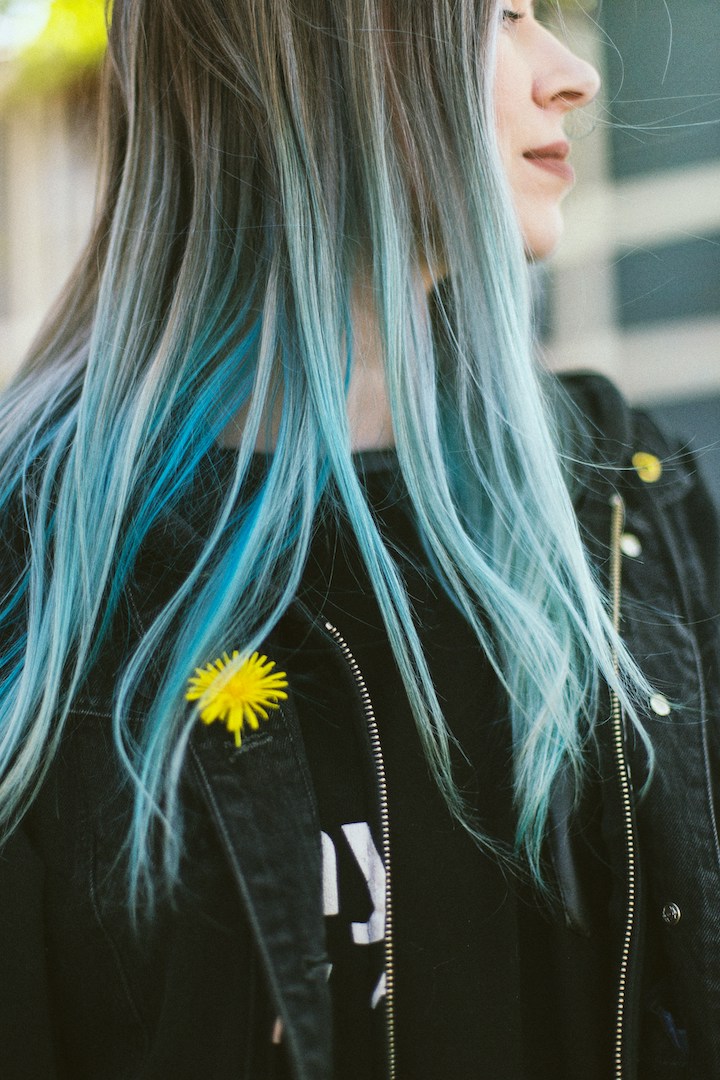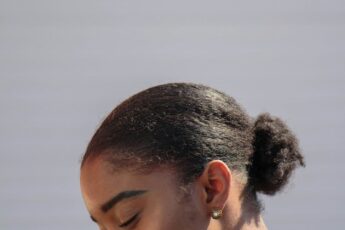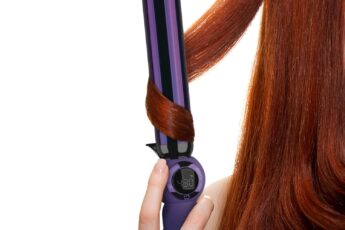Have you ever dyed your hair, rinsed it out, and felt that sinking feeling? You know what I mean. That moment when the color looks flat. Or worse—uneven. You followed the steps, used a good product, and still didn’t get the results you wanted.
I’ve been there. And trust me, it’s not just about the dye. It’s about something most people never even think about: dye penetration.
Once I learnt about dye penetration optimization, everything changed. The color lasted longer. It showed up brighter. And it didn’t fade the way it used to. If you’re tired of throwing money at dye that never lives up to the box photo, you’re going to want to stick around for this.
Let’s talk.
Table of Contents
What Dye Penetration Really Means (And Why You Should Care)
Okay, before anything else, let’s break this down. Dye penetration is just the fancy way of saying: how well the color gets into your hair.
Your hair isn’t a smooth surface. It’s got layers, kind of like shingles on a roof. These layers are called cuticles. When you dye your hair, the color needs to get past those cuticles and reach the inner layer, known as the cortex. That’s where the magic happens.
If the dye doesn’t make it there—or doesn’t stay there—it won’t show up well. Or it’ll disappear after a couple of washes.
So yeah, it’s not just about picking a “good” dye. It’s about making sure your hair is ready to receive it and hold onto it. That’s where this whole dye penetration thing comes in.

The Hidden Role of Hair Health in Dye Penetration Optimization
Here’s something nobody tells you when you first start coloring your hair: damaged hair doesn’t hold color well.
And yes, I know that sounds weird. You’d think rough, dry hair would soak up more color. But the truth is, when your hair is already damaged, the cuticle layers are too lifted or even broken. That means the dye gets in too fast, then slides right back out—or doesn’t stay evenly.
You might’ve noticed this if your roots and ends look completely different after dyeing. That’s usually why.
And then there’s buildup. If you use a lot of products—or if your water is full of minerals—that gunk sits on your strands and blocks the dye. You could be doing everything right, and it still won’t stick if your hair’s coated in residue.
You also want to know about porosity. That’s just how easily your hair absorbs moisture and products. High porosity hair might grab onto dye fast but lose it just as quickly. Low porosity hair? It resists everything—even color.
If you’re not sure where you fall, try this: take a clean strand of dry hair, drop it in a glass of water. If it sinks fast, it’s high porosity. If it floats for a long time, it’s low. Somewhere in the middle? That’s balanced—and ideal for dyeing.
Also Read: Hair Growth Supplements – What You Need to Know Before You Swallow One More Pill
Prepping Your Hair: What You Need to Do (But Probably Skip)
Here’s the part most people rush. The prep. And honestly, I get it. You’re excited. You’ve picked your color, cleared your evening, maybe even lit a candle. You’re ready.
But if you skip the prep, you’re setting yourself up for disappointment.
Start with a clarifying shampoo. Not your everyday stuff. A clarifying shampoo is meant to strip away all the product buildup, oils, and mineral residue. Use it a day or two before dyeing—not the same day—so your scalp can calm down and your natural oils can come back a little.
And please don’t deep condition right before dyeing. I know it’s tempting. You want soft, healthy hair for the big day. But too much moisture can actually block the dye from getting in. You want balanced hair—not overly soft and not too dry.
Try this simple routine the day before dyeing:
- Clarify and rinse with cool water
- Use a lightweight, protein-rich conditioner
- Let your hair air dry completely
- Avoid heavy oils or styling creams
Think of it like prepping a wall before painting it. Clean, dry, and balanced—that’s what your hair should feel like.
Application Matters: How Technique Impacts Penetration
Let’s talk about application, because even if your hair is prepped perfectly, the way you apply the dye can still mess everything up.
First rule? Section your hair. And I don’t mean two big chunks and hope for the best. I’m talking four to six neat sections. Use clips. Start at the roots, because that’s where your hair is warmest and will process faster. Then move to the mid-lengths and ends.
Don’t slap on a giant glob of dye and rub it around. That doesn’t work. It creates uneven patches and wastes product.
Use a brush if you can. A dye brush gets the product exactly where it needs to go. Massage it in with your fingers to make sure it’s saturated.
And let’s talk timing. Don’t leave it on longer than the instructions say, hoping it’ll be “extra vibrant.” That can actually damage your hair and make the dye over-process—or fade faster.
On the flip side, rinsing too early is just as bad. If it hasn’t had enough time to penetrate, the color won’t take.
Set a timer. Follow it.
Aftercare Tricks to Lock in That Color
You’ve rinsed, conditioned, maybe even styled. But the work isn’t over. If you want the color to last, aftercare is everything.
First thing: rinse with cold water. Or at least cool water. It helps the cuticle lie flat, locking the dye inside. Hot water lifts the cuticle again, and the color starts to escape.
Next? Your shampoo matters. Sulfate-free only. Sulfates strip color like nobody’s business. And no, it’s not just a trend. It’s a real thing. I learned the hard way after ruining a fresh dye job in one week.
Washing frequency also matters. You don’t need to wash your hair every day. In fact, you shouldn’t. Try to go two to three days between washes, especially in the first week after dyeing.
Heat styling? Be careful. Blow dryers, straighteners, curling irons—they all lift the cuticle and push the dye out. If you must use heat, protect your hair first. Always.
Natural Add-Ons That Help Dye Penetrate Better
This part might surprise you. There are actually a few natural ways to help your hair absorb dye better. But I’m not talking about weird internet hacks with ketchup or coffee grounds.
Let’s keep it simple and real.
Oils (used correctly)
Coconut oil the night before can actually help protect your hair without blocking dye. Just apply a small amount, let it soak overnight, and wash it out gently before dyeing.
Argan oil and avocado oil also support moisture balance, especially after you dye. But don’t use them right before color. Use them in the days leading up.
DIY Treatments (with caution)
Apple cider vinegar rinses (very diluted) can help remove buildup and balance the scalp. But don’t do it the same day as dyeing.
A quick protein mask once a week leading up to your dye session can also help strengthen your strands so they can handle the process better.
Just don’t go overboard with DIYs. More isn’t always better. Pick one or two simple things and stick with them.
Also Read: How to Fix Hair Dye Disasters at Home

Foods That Support Hair Health
Yep, your diet plays a role too. Healthy hair starts from the inside. Here are a few things you might want to add to your meals:
- Eggs (protein and biotin)
- Salmon or chia seeds (omega-3s)
- Spinach and leafy greens (iron)
- Nuts and seeds (zinc and vitamin E)
These don’t work overnight, but they support stronger, healthier hair over time—which means better dye results long-term.
Conclusion
So, here’s the real deal. If you’ve ever blamed your dye for bad results, it might not be the dye at all.
It might be how you prep, how you apply, or how you care for your hair afterward.
I learned this through a whole lot of trial and error. And I’m hoping that now, you won’t have to go through the same frustration. Because when you take time to understand how dye actually works with your hair, everything changes.
Color looks better. It lasts longer. It fades slower. And it finally feels worth the effort.
Next time you color your hair, don’t just cross your fingers. Get ready the right way. Your future self—with glowing, even, long-lasting color—will thank you.
Frequently Asked Questions
What causes hair dye to fade so fast?
Usually, it’s a mix of things: hot water, harsh shampoos, damaged hair, or poor prep. If your hair isn’t ready to absorb the dye—or if you don’t seal it in properly—it fades fast.
Can I make cheap hair dye work better with better prep?
Yes. Honestly, even budget-friendly dye can give great results if your hair is clean, balanced, and prepped properly. Don’t skip the clarifying and sectioning.
Should I deep condition before or after dyeing my hair?
After. Always after. Deep conditioning before can block the dye from penetrating. Once your hair’s colored, deep condition to restore moisture and softness.
How do I know if my hair is too damaged to hold color?
If your hair feels gummy when wet, breaks easily, or never holds a consistent tone, it may be too damaged. Take a break from dyeing, focus on repair, then come back to color when it’s stronger.



